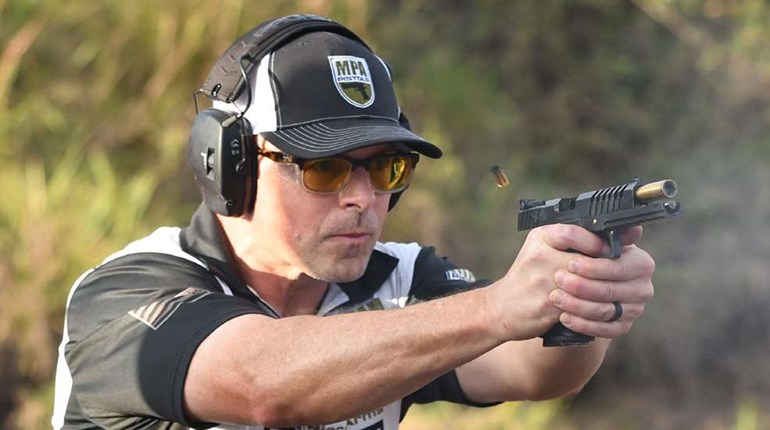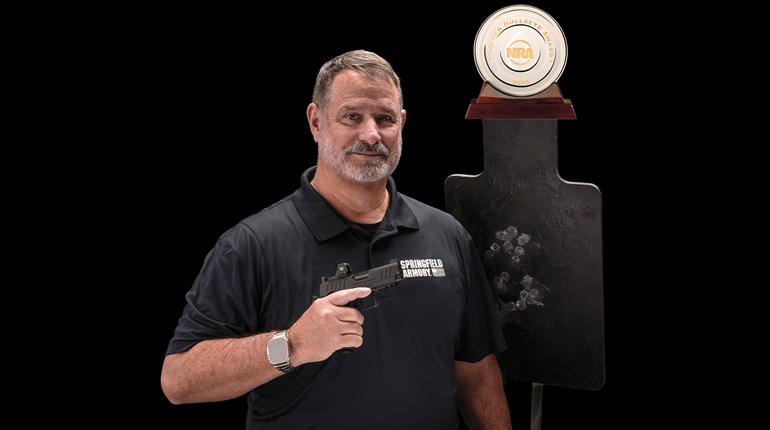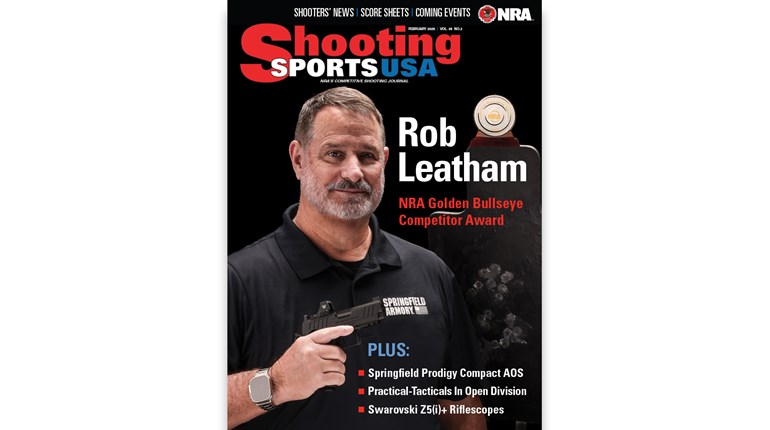
Perhaps one of the most acclaimed competitions shooters in the history of the sport and founding father of contemporary performance shooting, Rob Leatham, defines the shooting process as “bringing stability to alignment and breaking the shot” – that is pressing off a round without changing muzzle orientation to the target.
What is inferred by this prime directive, and hardly given the status it truly deserves, is that if you alter what built and sustains that alignment – stability - you compromise both accuracy and control. Stability is the bedrock of the shooting process and is the foundation of accuracy.
Stability of course takes place in every aspect of your ability to perform a task consistently and repeatably. World champion Max Michel states that “consistency plus repeatability equals success.” When you set out to accomplish a task be consistent in your movements and be able to repeat that skill on demand greater than 85 percent of the time.
Those who strive to be better shooters will continue to build skills and convert those skills to repeatable on demand performance which in turn builds personal confidence. All of this is supported by building and keeping stability. Exactly what are the skill building blocks of developing stability and, more importantly, how can we leverage those to produce a successful result of consistent and repeatable performance? The answer is found in your master grip, body posture and visual process.
Master Grip
As you can imagine a dependable master grip with your strong hand coming out of the holster met with the powerful guiding force of your support hand lay the bedrock of stability and control especially for a pistol.
If you look at the fastest cars in the world, they have no tread on their tires and are tremendously oversized in comparison to a car not designed for the racetrack. Why? Because more contact equals more control.
Back in my rock-climbing days I wanted to set as many points of positive contact with my body on the rock as possible to ensure stability. The same goes for your firearm – the greater surface and points of contact the greater your control. Floating thumbs and/ or fingers with intermittent patches of open space found anywhere on or near the lower part of the gun will cost you significant stability.
It all starts with the grip and stays with the grip. Even if you can establish a solid grip, initially, its incumbent upon the consummate performance shooter to maintain what Matt Pranka calls a “durable grip.” In other words, once you build it you need to keep it throughout the entire string of fire. The price tag for failure is a change in either grip pressure or hand position which is detrimental to accuracy and overall fire control.
Body Posture
Consistency begins with the natural posture of your body. Intermittently changing the space between your ears and your shoulders compromises consistency.
You cannot consistently raise your shoulders always to the exact same position in space to the millimeter – closing the gap between your ears and your shoulders - every time in the exact same spot. However, it is possible to relax your shoulders with your body’s natural “at rest” position spacing as you know where that is all the time. Set this as your default and you’ve added another cornerstone to the foundation.
Be cognizant of loose wrists, elbows, or shoulders. You want to have your frame built so that you can support impulse (let recoil flow through your joints and into to your torso) rather than impact (recoil being lost in loose joints jarring the stable platform) causing input into the gun.
A precision trigger press stabilizes fire control, you can slap it hard as you want up close but at longer distances or more technical the shot the more precise a press you need which is fully reliant on the platform upon which it is set – your stable firing platform of body posture.
Visual Process
Only the highest-level shooters place an added onus of accuracy upon their visual process. Using hard focus over visual awareness gives you the best possible outcome by staying hard focused on the target and simultaneously being aware of your sites.
When driving a car, you may be aware of your hood ornament, but you are focused on staying in between the white and yellow lines on the freeway. In other words, when applied to shooting, don’t stare at the windshield look at the road. Rounds go exactly where you look – it is the biomechanics of our human structural design.
You want to always give yourself the mechanical advantage. Focus your visual process. Pinpoint hard target focus sets the touchpoint for kinesthetic alignment using your proprioceptors. Additionally, using the ocular center of your eye (as opposed to looking up through your eyebrows) will help you prevent distorting optimal visual acuity and stabilize the alignment of your point of impact with your point of aim.
Combining a stable and durable grip with a sound firing platform (good body posture using your ‘default settings’) plus appropriate application of your visual process are the cornerstones for the foundation of accuracy.




































